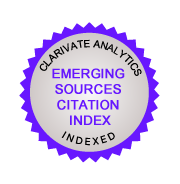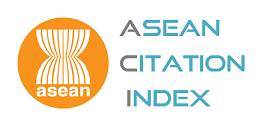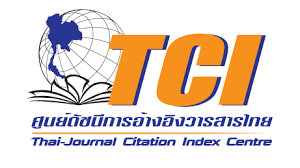Coating of zinc substrates with fluorosilane molecules using a water-treatment technique as a pre-coating procedure for the creation of superhydrophobic surfaces
DOI:
https://doi.org/10.55713/jmmm.v35i4.2217Keywords:
Organosilane, Molecular coating, Superhydrophobicity, Functionalization, Water contact angleAbstract
Superhydrophobic surfaces were successfully created when zinc substrates were coated with molecules with low surface energy through grafting of fluorosilane molecules. The zinc substrate underwent water-treatment technique as a pre-coating procedure to enhance the reaction sites for the grafting of fluorosilane molecules. The water contact angle of the samples went as high as 161.1° ± 0.8°. At lower fluorosilane-ethanol soaking times, water contact angles have lower values while at higher soaking time, it has higher water contact angle values. At 240 min fluorosilane-ethanol soaking time, optimum value of water contact angle was achieved. Fluorosilane molecules are widely distributed through the zinc substrate surface as inferred from the mapping of the silicon atoms through Energy Dispersive Spectroscopy. As inferred from the Infrared Spectroscopy, water treatment process enhances presence of Zn‒OH moieties which are perceived to be binding sites of fluorosilane molecules. The presence of vibrational modes related to Si‒O and C‒F were detected after the water-treated samples were soaked in fluorosilane-ethanol solution; the said vibrational modes were attributed to the presence of grafted fluorosilane molecules.
Downloads
References
M. Ferrari, and A. Benedetti, “Superhydrophobic surfaces for applications in seawater,” Advances in Colloid and Interface Science, vol. 222, pp. 291–304, 2015. DOI: https://doi.org/10.1016/j.cis.2015.01.005
E. J. Falde, S. T. Yohe, Y. L. Colson, and M. W. Grinstaff, “Super- hydrophobic materials for biomedical applications,” Biomaterials, vol. 104, pp. 87–103, 2016. DOI: https://doi.org/10.1016/j.biomaterials.2016.06.050
P. Zhang, and F. Lv, “A review of the recent advances in super- hydrophobic surfaces and the emerging energy-related applications,” Energy, vol. 82, pp. 1068–1087, 2015. DOI: https://doi.org/10.1016/j.energy.2015.01.061
M. Nosonovsky, and B. Bhushan, “Superhydrophobic surfaces and emerging applications: Non-adhesion, energy, green engineering,” Current Opinion in Colloid & Interface Science, vol. 14, no. 4, pp. 270–280, 2009. DOI: https://doi.org/10.1016/j.cocis.2009.05.004
E. Vazirinasab, R. Jafari, and G. Momen, “Application of super- hydrophobic coatings as a corrosion barrier: A review,” Surface and Coatings Technology, vol. 341, pp. 40–56, 2017. DOI: https://doi.org/10.1016/j.surfcoat.2017.11.053
X. Lan, B. Zhang, J. Wang, X. Fan, and J. Zhang, “Hydro-thermally structured superhydrophobic surface with superior anti-corrosion, anti-bacterial and anti-icing behaviors,” Colloids and Surfaces a Physicochemical and Engineering Aspects, vol. 624, p. 126820, 2021. DOI: https://doi.org/10.1016/j.colsurfa.2021.126820
Y. Wang, P. Liu, R. Luo, B. Chen, J. Li, F. Yang, H. Zhou, J. Zeng, L. Xing, and J. Guo, “Design and fabrication of super-hydrophobic photothermal coating on copper mesh and its applications on anti-corrosion, anti-icing and oil-water separation,” Progress in Organic Coatings, vol. 188, p. 108243, 2024. DOI: https://doi.org/10.1016/j.porgcoat.2024.108243
X. Zhang, X. Dou, Z. He, H. Jin, C. He, and D. Zhang, “Fabrication of superhydrophobic cauliflower-like Cu Co coating with anti-corrosion and anti-fouling properties on B10 copper–nickel alloy welded joint,” Surface and Coatings Technology, vol. 474, p. 130121, 2023. DOI: https://doi.org/10.1016/j.surfcoat.2023.130121
Y. Liu, X. Cao, J. Shi, B. Shen, J. Huang, J. Hu, Z. Chen, and Y. Lai, “A superhydrophobic TPU/CNTs@SiO2 coating with excellent mechanical durability and chemical stability for sustainable anti-fouling and anti-corrosion,” Chemical Engineering Journal, vol. 434, p. 134605, 2022. DOI: https://doi.org/10.1016/j.cej.2022.134605
L. Wang, X. Xiao, E. Liu, S. Yu, X. Yin, J. Wang, G. Zhu, Q. Li, and J. Li, “Fabrication of superhydrophobic needle-like Ca-P coating with anti-fouling and anti-corrosion properties on AZ31 magnesium alloy,” Colloids and Surfaces a Physicochemical and Engineering Aspects, vol. 620, p. 126568, 2021. DOI: https://doi.org/10.1016/j.colsurfa.2021.126568
T. Zhu, Y. Yuan, H. Xiang, G. Liu, X. Dai, L. Song, and R. Liao, “A composite pore-structured superhydrophobic aluminum surface for durable anti-icing,” Journal of Materials Research and Technology, vol. 27, pp. 8151–8163, 2023. DOI: https://doi.org/10.1016/j.jmrt.2023.11.250
Y. Deng, F. Xu, Z. Yin, M. Xue, Y. Chen, P. He, J. Wu, J. Ou, F. Wang, Y. Luo, and Z. Hong, Controllable fabrication of superhydrophobic alloys surface on 304 stainless steel substrate for anti-icing performance,” Ceramics International, vol. 49, no. 15, pp. 25135-25143, 2023. DOI: https://doi.org/10.1016/j.ceramint.2023.05.044
N. Huang, Y. Wang, Y. Zhang, L. Liu, N. Yuan, and J. Ding, “Multifunctional coating on magnesium alloy: Superhydrophobic, self-healing, anti-corrosion and wear-resistant,” Surface and Coatings Technology, vol. 463, p. 129539, 2023. DOI: https://doi.org/10.1016/j.surfcoat.2023.129539
B. Yin, L. Fang, J. Hu, A. Tang, W. Wei, and J. He, “Preparation and properties of super-hydrophobic coating on magnesium alloy,” Applied Surface Science, vol. 257, no. 5, pp. 1666–1671, 2010. DOI: https://doi.org/10.1016/j.apsusc.2010.08.119
L. Li, J. He, J. Lei, L. Liu, X. Zhang, T. Huang, N. Li, and F. Pan, “Anticorrosive superhydrophobic AZ61 Mg surface with peony-like microstructures,” Journal of the Taiwan Institute of Chemical Engineers, vol. 75, pp. 240–247, 2017. DOI: https://doi.org/10.1016/j.jtice.2017.03.007
X. Li, Q. Zhang, Z. Guo, T. Shi, J. Yu, M. Tang, and X. Huang, “Fabrication of superhydrophobic surface with improved corrosion inhibition on 6061 aluminum alloy substrate,” Applied Surface Science, vol. 342, pp. 76–83, 2015. DOI: https://doi.org/10.1016/j.apsusc.2015.03.040
W. Liu, S. Wang, G. Wang, J. Zhang, and C. Zhou, “Investigation on the differences of surface cleaning properties of series of superhydrophobic aluminum alloys,” Colloids and Surfaces a Physicochemical and Engineering Aspects, vol. 651, p. 129614, 2022. DOI: https://doi.org/10.1016/j.colsurfa.2022.129614
L. Zhang, X. Liu, J. Yan, Z. Li, S. Huang, Y. Weng, J. Li, C. Yuan, P. Han, S. Ye, and X. Zhang, “Preparation of superhydrophobic coating with anti-corrosion and anti-fouling properties on the surface of low manganese steel by electrodeposition,” Surface and Coatings Technology, vol. 460, p. 129412, 2023. DOI: https://doi.org/10.1016/j.surfcoat.2023.129412
Y. Zhang, Z. Zhang, J. Yang, Y. Yue, and H. Zhang, “Fabrication of superhydrophobic surface on stainless steel by two-step chemical etching,” Chemical Physics Letters, vol. 797, p. 139567, 2022. DOI: https://doi.org/10.1016/j.cplett.2022.139567
A. Khaskhoussi, L. Calabrese, and E. Proverbio, “Anticorrosion superhydrophobic surfaces on AA6082 aluminum alloy by HF/ HCl texturing and Self-Assembling of silane monolayer,” Materials, vol. 15, no. 23, p. 8549, 2022. DOI: https://doi.org/10.3390/ma15238549
A. Khaskhoussi, L. Calabrese, and E. Proverbio, “Superhydrophobic Self-Assembled silane monolayers on hierarchical 6082 aluminum alloy for Anti-Corrosion applications,” Applied Sciences, vol. 10, no. 8, p. 2656, 2020. DOI: https://doi.org/10.3390/app10082656
F. Lv, and P. Zhang, “Fabrication and characterization of super- hydrophobic surfaces on aluminum alloy substrates,” Applied Surface Science, vol. 321, pp. 166–172, 2014. DOI: https://doi.org/10.1016/j.apsusc.2014.09.147
A. Kumar, and B. Gogoi, “Development of durable self-cleaning superhydrophobic coatings for aluminium surfaces via chemical etching method,” Tribology International, vol. 122, pp. 114–118, 2018. DOI: https://doi.org/10.1016/j.triboint.2018.02.032
Y. Ge, J. Cheng, X. Wang, L. Xue, S. Zhu, B. Zhang, S. Hong, Y. Wu, X. Zhang, and X. Liang, “Formation and properties of superhydrophobic AL coatings on steel,” ACS Omega, vol. 6, no. 28, pp. 18383–18394. 2021. DOI: https://doi.org/10.1021/acsomega.1c02299
B. K. Tudu, A. Kumar, and B. Bhushan, “Facile approach to develop anti-corrosive superhydrophobic aluminium with high mechanical, chemical and thermal durability,” Philosophical Transactions of the Royal Society a Mathematical Physical and Engineering Sciences, vol. 377, no. 2138, p. 20180272. 2018. DOI: https://doi.org/10.1098/rsta.2018.0272
S. Rahimipour, E. Salahinejad, E. Sharifi, H. Nosrati, and L. Tayebi, “Structure, wettability, corrosion and biocompatibility of nitinol treated by alkaline hydrothermal and hydrophobic functionalization for cardiovascular applications,” Applied Surface Science, vol. 506, p. 144657, 2019. DOI: https://doi.org/10.1016/j.apsusc.2019.144657
Z. Xu, H. Qi, Y. Cheng, and X. He, “Nanocoating: Anti-icing superamphiphobic surface on 1060 aluminum alloy mesh,” Applied Surface Science, vol. 498, p. 143827, 2019. DOI: https://doi.org/10.1016/j.apsusc.2019.143827
L. Li, Y. Zhang, J. Lei, J. He, R. Lv, N. Li, and F. Pan, “A facile approach to fabricate superhydrophobic Zn surface and its effect on corrosion resistance,” Corrosion Science, vol. 85, pp. 174-182, 2014. DOI: https://doi.org/10.1016/j.corsci.2014.04.011
D. Zhang, E. Wei, H. Jing, Y. Li, L. Yang, Y. Qian, J. Liu, and Y. Jin, “Facile construction of superhydrophobic polydopamine-based film and its impressive anti-corrosion performance on zinc surface,” Materials Chemistry and Physics, vol. 282, 2022. DOI: https://doi.org/10.1016/j.matchemphys.2022.125935
J. Sun, F. Zhang, J. Song, L. Wang, Q. Qu, Y. Lu, and I. Parkin, “Electrochemical fabrication of superhydrophobic Zn surfaces,” Applied Surface Science, vol. 315, pp. 346-352, 2014. DOI: https://doi.org/10.1016/j.apsusc.2014.07.140
W. Xu, T. Ning, X. Yang, and S. Lu, “Fabrication of super-hydrophobic surfaces on zinc substrates,” Applied Surface Science, vol. 257, pp. 4801-4806, 2011. DOI: https://doi.org/10.1016/j.apsusc.2010.12.059

Downloads
Published
How to Cite
License
Copyright (c) 2025 Journal of Metals, Materials and Minerals

This work is licensed under a Creative Commons Attribution-NonCommercial-NoDerivatives 4.0 International License.
Authors who publish in this journal agree to the following terms:
- Authors retain copyright and grant the journal right of first publication with the work simultaneously licensed under a Creative Commons Attribution License that allows others to share the work with an acknowledgment of the work's authorship and initial publication in this journal.
- Authors are able to enter into separate, additional contractual arrangements for the non-exclusive distribution of the journal's published version of the work (e.g., post it to an institutional repository or publish it in a book), with an acknowledgment of its initial publication in this journal.












